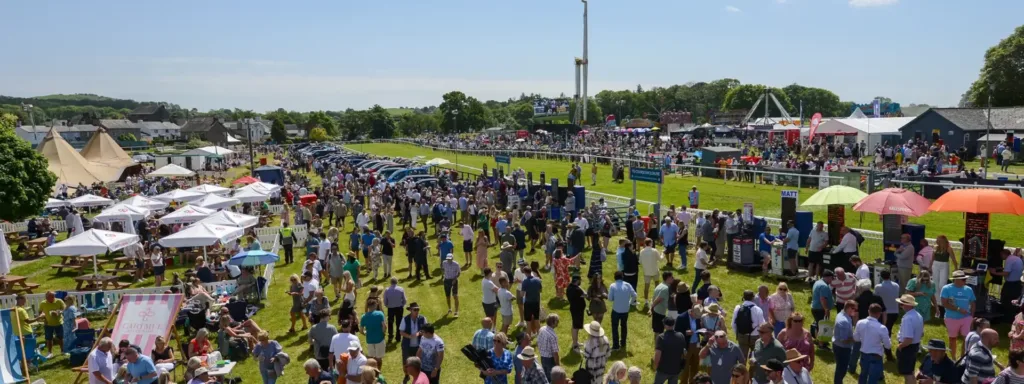
Cartmel Racecourse: A Trader’s Guide
Why Cartmel stands apart
Tucked away on the edge of the Lake District, Cartmel hosts just nine National Hunt fixtures a year yet routinely attracts crowds in excess of 20,000—third only to Aintree and Cheltenham for average attendance. Most racegoers picnic in the infield, where a funfair and food stalls sit on one side of the finishing chute, giving the day a county-show feel rather than a conventional race meeting.
The course layout in a nutshell
Cartmel is a tight, left-handed oval barely a mile round with only six fences per circuit. What makes it truly unusual is the figure-of-eight configuration created by a long home straight that cuts across the infield. The final fence sits a full four furlongs from the winning line—the longest run-in in British racing for chasers (about two furlongs for hurdlers).
What the long run-in means for pace and stamina
- Energy management matters. Horses that attack early must still gallop half a mile after the last fence; many get caught close home.
- Course specialists are gold. Because the bend into the straight is sharp and the run-in relentless, horses with proven Cartmel form often outrun their official ratings.
- Finishing-speed bias. Hold-up types with a turn of foot trade shorter than usual once the field straightens, creating pronounced price swings in the last 20 seconds of a race.
Viewing angles, TV feeds and the courtsider gap
Spectators lose sight of the runners for roughly half the circuit; even those perched by the last fence must wait for the field to re-emerge in the chute. That limited visibility blunts on-course courtsiders’ advantage—especially compared with tracks where they can follow the whole race. Fast pictures therefore level up the playing field for remote Betfair traders, but the in-running market can still react fractionally late approaching the elbow where stamina starts to ebb.
In-play trading tactics that work at Cartmel
- Back-to-lay front-runners before the last fence. Prices often shorten as a prominent horse meets the final obstacle fluently; exit immediately after take-off to avoid the stamina test down the long straight.
- Leave an exaggerated lay in the system. From the last flight to the line is about 25 seconds—ample time for a tired leader to hit the wall and trade above 3.0 despite being five lengths clear.
- Side with strong-staying sectionals. Cartmel’s final four furlongs average six to eight seconds longer than tracks of similar class; identify horses with proven closing splits at places such as Hexham or Carlisle and keep them onside.
- Watch for loose horses. With only six fences, fallers are rare, but when they do occur the loose horse must negotiate an entire extra half-mile on the inside chute—causing late carnage and sudden market volatility.
Data nuggets: numbers that matter
- Course circumference: 1 mile 1 furlong
- Chase run-in: 4 furlongs – longest in the UK
- Fences per circuit: 6, regarded as stiff for a minor track
- Average time from last fence to line: 25–26 seconds on good ground in novice chases (roughly 15 seconds at Market Rasen)
- Top trainer strike-rate (last five seasons): Donald McCain Jr. 25 % (17 wins from 68 runners)
Final thoughts
Cartmel’s carnival atmosphere disguises a course that punishes poor judgement more severely than most. Its peculiar geometry stretches races beyond their official distances and creates a unique in-play signature: prices continue to reshuffle long after the jumping is done. Master the run-in dynamics and you’ll find one of the most trader-friendly edges in British jump racing.
